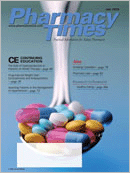Publication
Article
Pharmacy Times
The Nose Knows: Sniffing Out Zantac and Zyrtec Mix-ups
Mix-ups involving Zantac (ranitidine)syrup and Zyrtec (cetirizine)syrup have led to anumber of dispensing errors involvingpediatric patients. In the majority ofcases, the histamine2 (H2)-receptorblocker Zantac was prescribed andprofiled in the pharmacy computer systemcorrectly, but Zyrtec, an H1-receptorantagonist, was mistakenly selectedfrom pharmacy stock and dispensed.Although these medicationsdo not have overlapping dosagestrengths, both are available in a syrupdosage form—Zantac 15 mg/mL,Zyrtec 1 mg/mL—and both can be usedin infant and pediatric patients.Because a different company manufactureseach medication, the containerlabels do not look alike. Both syrups,however, are available in 480-mLamber bottles (Zyrtec syrup is alsoavailable in a 120-mL bottle) and areoften stored next to one another onpharmacy shelves. The brand namesdo look alike (both contain the lettersZ, T, and C in the same positions of thedrug name) and can sound alike.
Errors involving liquids such asZantac and Zyrtec may be more difficultto detect during the verificationprocess, compared with those involvingoral solid dosage forms. The verificationprocess for tablets and capsulesincludes a visual comparison of themedication in the manufacturer's containerto the medication in the containerto be dispensed, as well as a comparisonof the manufacturer's label tothe pharmacy label and to the actualprescription. Unfortunately, a visualdouble check can be difficult with liquidmedications since they are oftenpoured from an amber stock bottle intoa smaller amber bottle to be dispensed.Also, the fact that many liquidsare available in the same color onlycompounds this difficulty (ie, Zantacand Zyrtec are both colorless to paleyellow). Fortunately, a medication'ssmell can often help distinguish it fromanother medication—Zantac syrup hasa peppermint smell and Zyrtec syruphas a banana-grape smell.
In many mix-ups reported to theInstitute for Safe Medication Practices,errors were discovered when somethingabout the medication's smellprompted investigation. In one case, apharmacist reported that he mistakenlyselected Zyrtec syrup for a Zantacsyrup refill. As he poured it from thestock bottle, however, he realized hewas using the wrong medicationbecause it lacked a peppermint smell.
In another report, an infant withgastroesophageal reflux disease wasprescribed Zantac syrup, but Zyrtecsyrup was mistakenly selected frompharmacy stock, and the final productwas labeled as Zantac syrup. Subsequently,the child received thewrong medication and had no improvementin her symptoms for 1month. A pharmacist recognized thatan error had occurred when the motherrequested that they use the "grapeZantac" to refill the medication. In yetanother case, a mother picked up arefill of her son's Zyrtec syrup. Whenshe went to give him a dose, however,she noticed that it smelled differentand called the pharmacy. It was determinedthat Zantac syrup had beenmistakenly dispensed.
Safe Practice Recommendations
Pharmacists should become asfamiliar with the smell of commonlydispensed liquids as with the appearanceof commonly dispensed tabletsand capsules. Confirm the smell of theliquid as it is poured or by opening themanufacturer's container and comparingits contents with what is being dispensed.Consider adding computeralerts that state the expected smell ofcommonly dispensed liquids. Ask pharmacysoftware vendors if they have orcan develop a program that incorporatesthis information into drug files sothat it alerts staff and prints the informationon the pharmacy label and inthe medication leaflet. Also, manufacturersshould prominently list a liquid'sflavor in their labeling. If flavoring systemsare used for liquid medications,confirm the liquid's original smellbefore adding the flavoring agent.Realize that after a flavor is added, anerror is less likely to be detected.During counseling, enlist patients'helpby informing them of the medication'sexpected smell (or flavor).
Dr. Gaunt is a medication safetyanalyst and the editor of ISMPMedication Safety Alert!Community/Ambulatory CareEdition.
Subscribe to Newsletter
Pharmacy Times and the Institute for SafeMedication Practices (ISMP) would like to makecommunity pharmacy practitioners aware of apublication that is available.
The ISMP Medication Safety Alert! Community/Ambulatory Care Edition is a monthly compilationof medication-related incidents, error-preventionrecommendations, news, and editorial content designedto inform and alert community pharmacypractitioners to potentially hazardous situationsthat may affect patient safety. Individual subscriptionprices are $45 per year for 12 monthlyissues. Discounts are available for organizationswith multiple pharmacy sites. This newsletter isdelivered electronically. For more information, contactISMP at 215-947-7797, or send an e-mailmessage to community@ismp.org.







